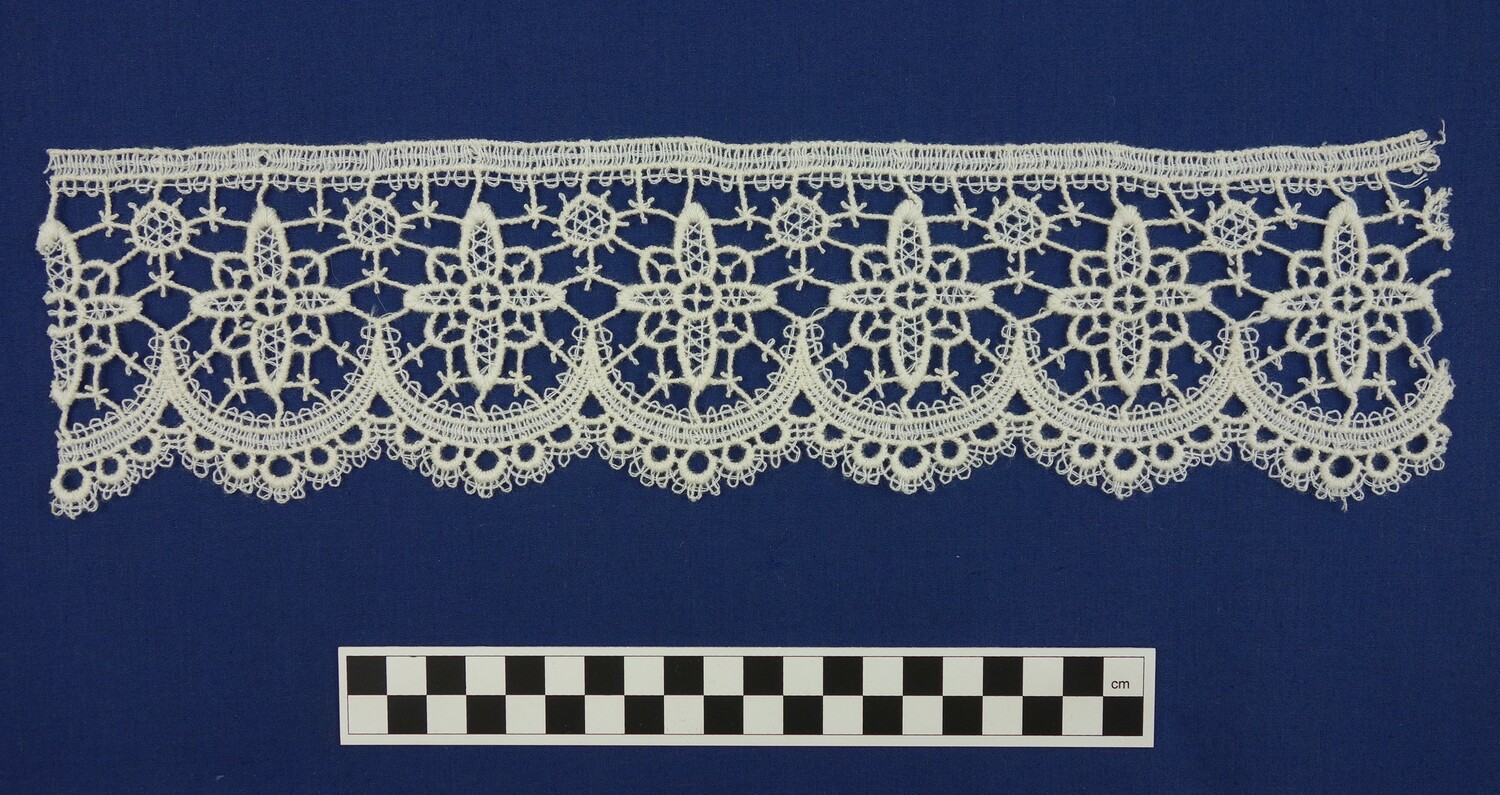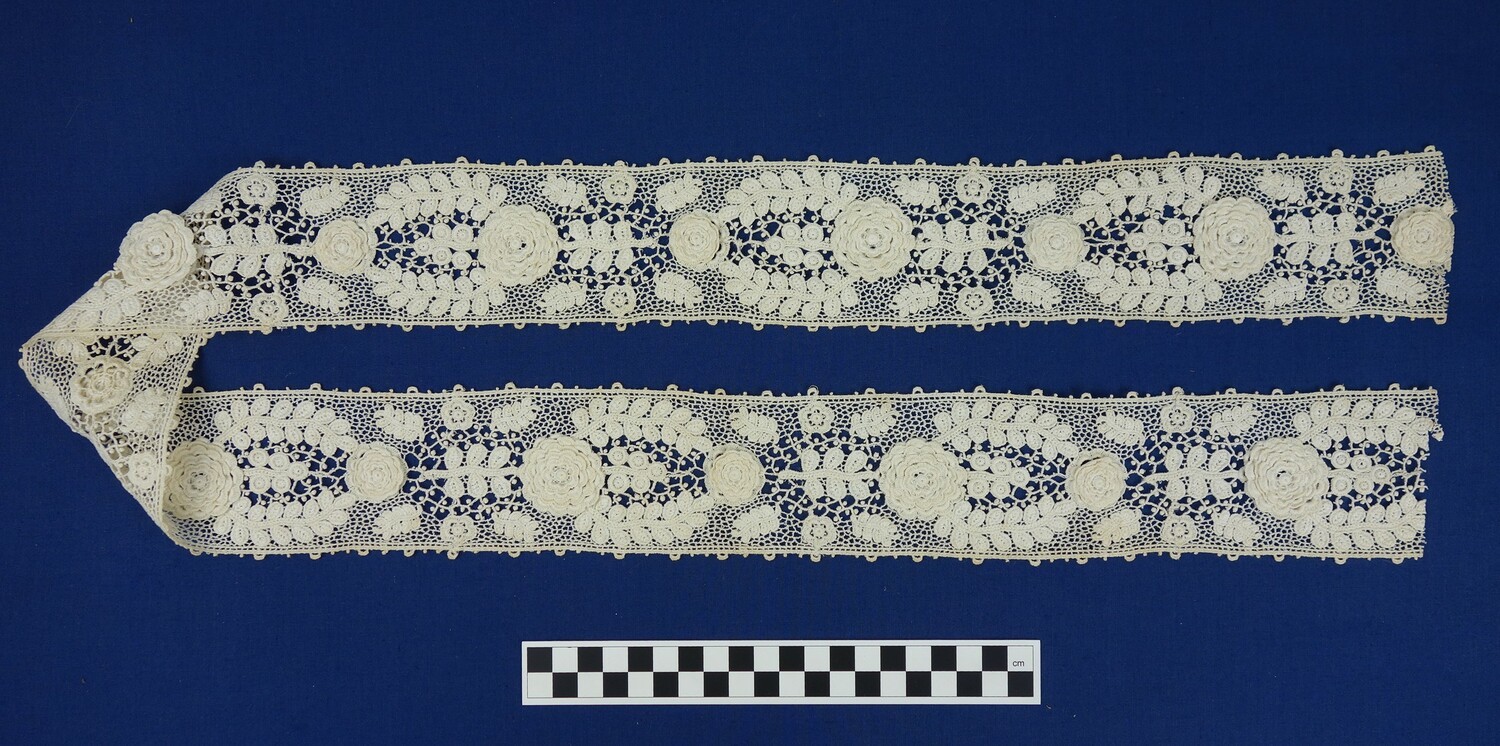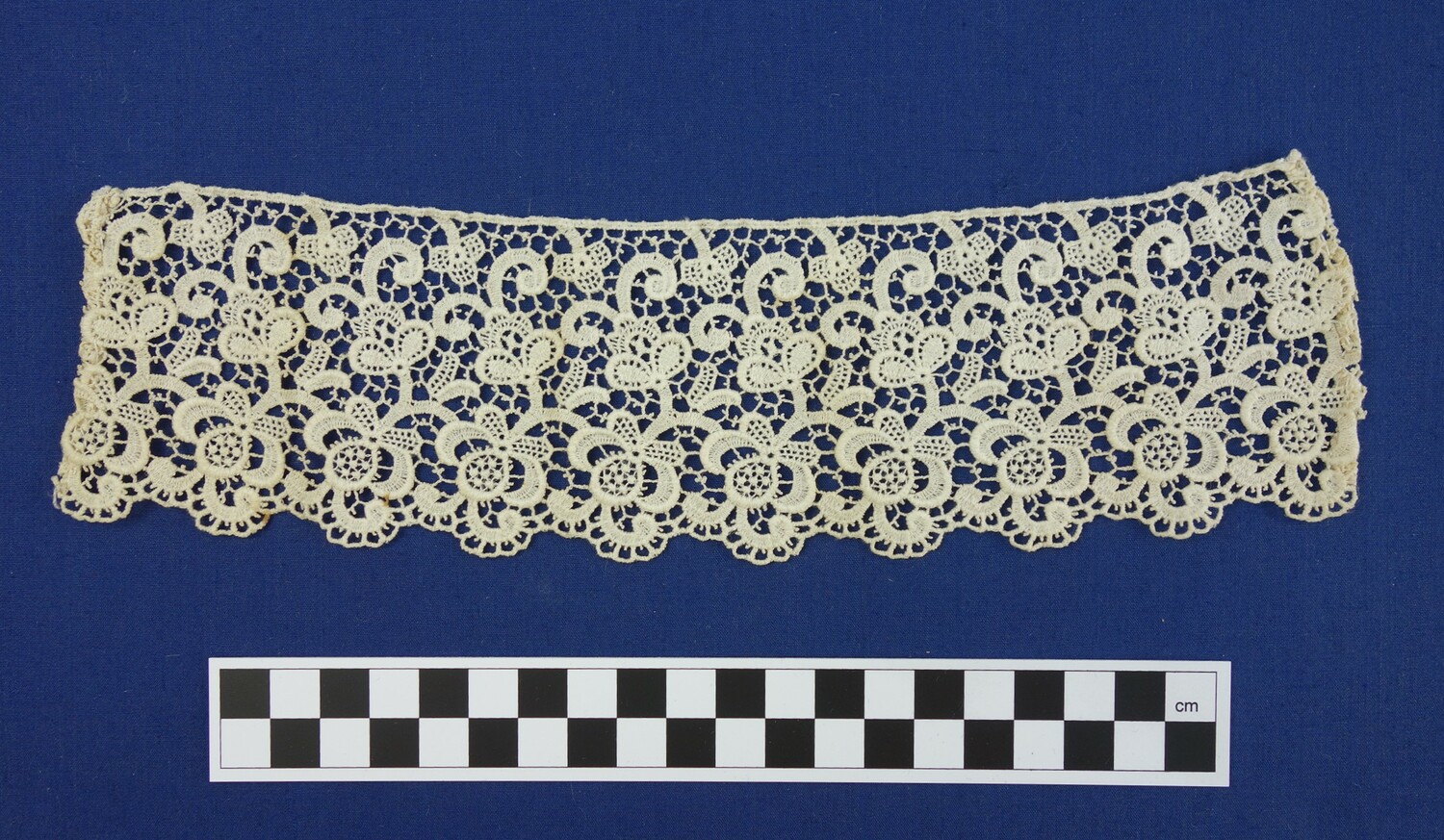by Olivia Buchan, TRC volunteer from Scotland, and currently MA student in Russian and Eurasian Studies, Leiden University. 12 April 2024
Since joining the bobbin lace classes at the TRC in the autumn of last year and later joining as a volunteer, I have been discovering just how broad the world of lace is. I am currently reorganising the TRC’s reference collection of lace, which contains over 1200 pieces (and more are continually being catalogued, photographed and added to the TRC Collection database).

The reference collection of lace uses a broad definition that goes beyond just bobbin and needle lace, and includes forms such as crochet lace, knitted lace, filet lace, a range of machine-made laces, as well as equipment such as bobbins, shuttles, and Tenerife lace frames.
The reference collection contains pieces of lace of all sizes, from small, tatted pieces the size of your thumb, to a machine-made lace curtain. There is also variation in the quality of the pieces, but the emphasis is, of course, on building a deep and broad collection of lace making techniques, rather than displaying just the finest examples.
This blog post is the first in what will be a series documenting my work with this brilliant collection and on topics related to lace in all its forms.
 Lace insertion made of chemical lace with three-dimentional roses. The Netherlands, early 20th century (TRC 2017.0151).
Lace insertion made of chemical lace with three-dimentional roses. The Netherlands, early 20th century (TRC 2017.0151).
Working with the reference collection has meant a great deal of learning on my part (which is very much ongoing) to correctly identify and catalogue new additions to the collection. One type of lace of which I was previously unaware and which has caught my eye is so-called “chemical lace”.
Also known as “burnt out”, “aetzed”, or “Swiss” lace, this form of lace developed in Germany and Switzerland in the 1880s as a development of machine embroidery. It represented a means of imitating needle lace with an embroidery machine. This was achieved by embroidering the lace pattern on a silk ground which is then removed using caustic soda (sodium hydroxide) or chlorine, which dissolves the silk protein, leaving the cotton design behind. This is comparable to embroiderers today using water-soluble “Magic Paper”.
There were many different patents taken out for variations on the process and substances used, but they broadly follow the same line to this day.

Chemical lace can be used to imitate almost all types of lace, including needle lace, bobbin lace and Irish crochet lace. While these chemical laces do imitate lace very well from a distance, it is not difficult to detect it on close inspection, as clearly illustrated in this page from a previous online exhibition from the TRC (Two pieces of Venetian lace imitation).
The most obvious indicator is a general fuzziness and the inability to distinguish clear stitches or follow individual threads. While handmade needle lace is made up of buttonhole stitches, the embroidery machine uses small zigzag lockstitches.
 Zoomed-in photograph of sample TRC 2007.0595.
Zoomed-in photograph of sample TRC 2007.0595.
Most chemical lace has been embroidered by a Schiffli machine. In fact, the development of the technique of degrading the backing fabric mean that the Schiffli machine leapt ahead of its contemporaries in the European market. By the early 1900s, these machines could be up to 13 metres long, 3 metres high, and could embroider up to three frames simultaneously above one another.
The development of this and other machine laces led inevitably to the decline of handmade lace, while making lace more widely available beyond just those rich enough to afford handmade versions. St Gallen in Switzerland was and remains an important centre for chemical lace production and textile production more generally. Contemporary examples of chemical lace can be seen in an online exhibition by the Bard Graduate Centre in New York (see link below), which features pieces from the Textilmuseum St Gallen. Chemical lace remains in use and new innovations are still being made.
Sources:
- Pat Earnshaw – Lace Machines and Machine Laces
- Pat Earnshaw – The Identification of Lace
- Gillian Dye – The Identification of Lace
- Santina Levey – Lace: a history
- Threads Of Power: Online Exhibition
- Chemical Lace; Connecting St. Gallen to New York and New Jersey










